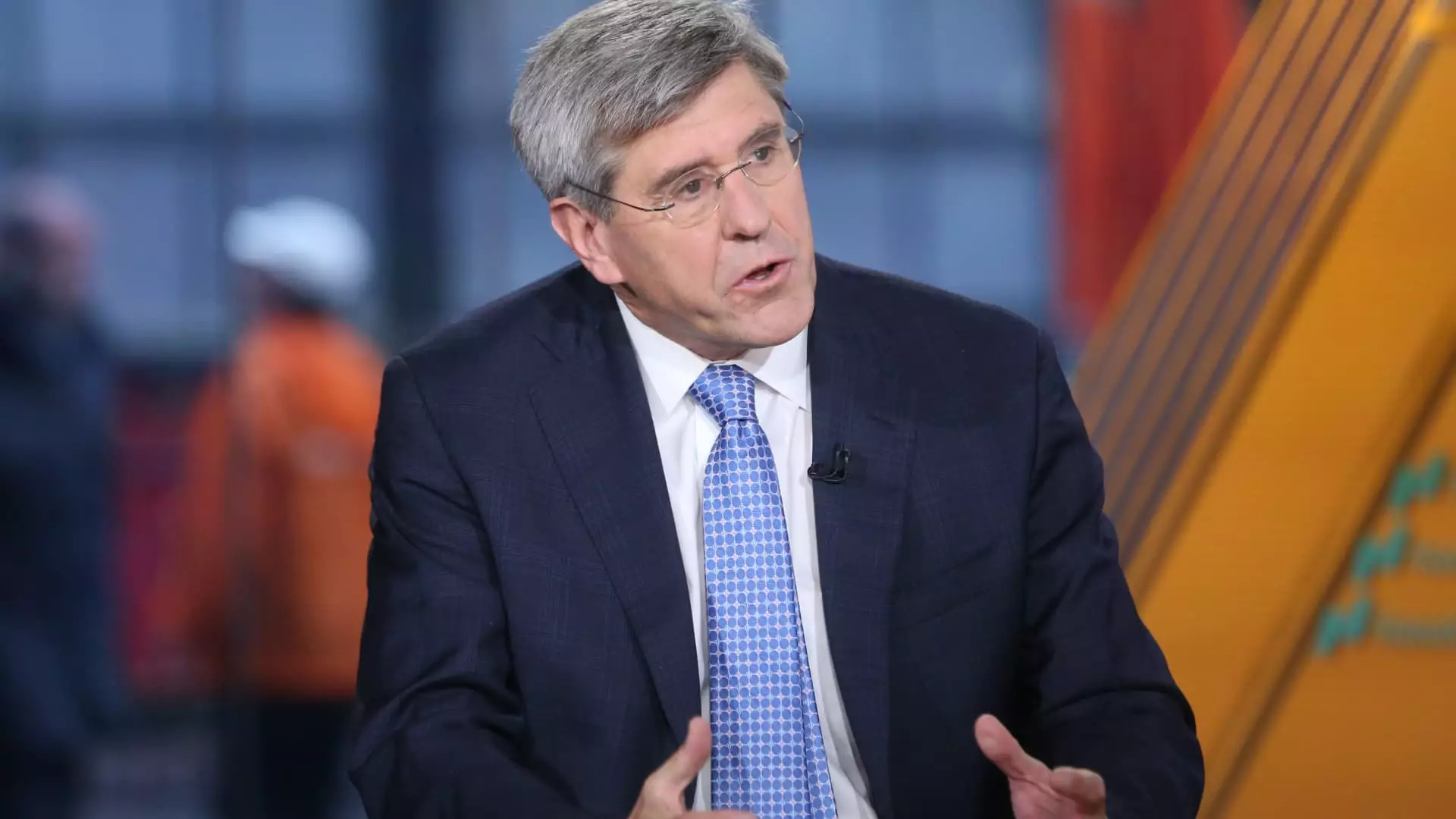The trade dynamics between the U.S. and China have taken on a dramatically adversarial tone over recent years, particularly during the tenure of former President Donald Trump. The concept of tariffs has become a focal point in this economic conflict, often portrayed as a strategic maneuver aimed at contesting global influence. As the economic landscape continues to evolve, it is vital to analyze the implications of such strategies—and the consequences for both nations and the world economy at large.
Stephen Moore, a notable figure in Trump’s economic circle, has asserted that China possesses a “pain threshold” for tariffs significantly lower than that of the United States. This observation is critical as it underscores a broader narrative of relative economic strength. Moore argues that China’s economy is currently “not doing all that well,” diminishing the nation’s capacity to absorb the financial blows inflicted by tariffs. Such comments invite scrutiny of both countries’ economic fundamentals, raising questions about how sustainable their respective growth trajectories are amidst rising trade tensions.
The characterization of the conflict as a mere “trade skirmish” rather than a full-blown “trade war” indicates a certain strategic optimism. However, it also risks underestimating the potential long-term repercussions of tariff escalation. The implications of sustained economic warfare could lead to deep-seated disruptions not only in U.S.-China relations but also in global supply chains and international economic cooperation.
The Trump administration, via its tariff policies, designed what it dubbed as a negotiating tool aimed at reestablishing dominance in various global markets. This approach not only targets China but extends to other nations like Mexico and Canada under the pretext of addressing pressing issues such as the opioid crisis. The willingness to use tariffs as a means to negotiate trade deals speaks to a broader trend in which economic policies are increasingly intertwined with geopolitical goals.
Moore’s comments regarding the dilemmas facing European allies further complicate the globalization narrative. He urges these nations to make choices that align with U.S. interests in light of China’s rise. This framing introduces an ideological layer to the economic confrontation, presenting it as a struggle not only for market shares but also for global leadership.
Economists express concern that the trade tensions can rapidly escalate, transforming skirmishes into widespread economic disruptions. Paul Ashworth of Capital Economics warns that the initial tariff announcements could yield destructive consequences for global trade systems. This sentiment is reinforced by Beijing’s retaliatory measures, which further exacerbate tensions.
The economic ramifications extend beyond mere dollar values. Significant tariff barriers can stifle innovation, increase consumer prices, and compromise job markets in both nations. While both countries navigate this delicate balance, it is the average citizens and businesses who often bear the brunt of such policy decisions, facing the risk of economic instability.
Another dimension to the tariff issue is the Trump administration’s focus on drug trafficking, especially concerning fentanyl and heroin imports from Mexico. The administration’s tariffs were couched as part of a broader strategy to mitigate drug-related issues in the U.S. Yet, this framing may obscure the complexities involved in drug trafficking, which often go beyond simple economic barriers. While the intention to curb drug imports is well-founded, equating economic policy with drug prevention efforts raises questions about the effectiveness of tariffs in achieving social outcomes.
The unfolding saga of U.S.-China tariff disputes highlights the necessity for a refined approach to economic diplomacy. Rather than resorting to punitive measures that can provoke retaliation and further market decline, a focus on collaborative frameworks for trade negotiations could yield more sustainable solutions. The efficacy of tariffs rests not only in their ability to protect national interests but also in their potential to foster meaningful dialogue around economic coexistence. As the global economy becomes increasingly interconnected, it is imperative that nations recognize their interdependence and seek paths that promote mutual benefits rather than divisive economic competition.



Leave a Reply